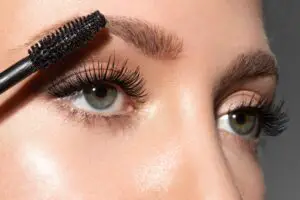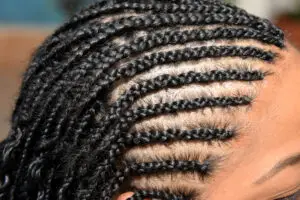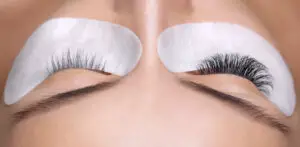Long hair can be a beautiful asset, but it may also be a challenge to maintain, especially during nighttime. A bonnet can help protect your luscious locks while you sleep, preventing tangles and breakage.
In this article, we will guide you on how to put long hair in a bonnet to maintain its health and lustre.
The humble bonnet has been around for centuries, originally designed as a protective head covering for women. Today, it’s still an excellent way to maintain your hair’s integrity and promote growth while you rest.
Selecting the right bonnet for your hair type and learning proper techniques to wear it can make a world of difference in your hair care routine.
Whether you’re a seasoned user or have never tried a bonnet before, there is always something new to learn.
We’ll break down the steps required to place your long hair in a bonnet correctly and share tips on bonnet selection, types, and materials that work best for your hair. So, keep reading to unlock the secrets of preserving the beauty of your long hair with a simple bonnet.
Why Use a Bonnet
A bonnet provides numerous benefits for individuals with long hair. It helps to protect the hair from damage caused by friction when sleeping on a pillow or during nightly tossing and turning. This can significantly reduce breakage and split ends, promoting healthier and stronger hair growth.
Apart from safeguarding the hair, using a bonnet also contributes to maintaining your preferred hairstyle for a longer period. This can be especially useful for individuals who have invested time and resources in obtaining salon treatments such as perms, braids, or intricate updos.
Additionally, bonnets can help to preserve the natural oils and moisture in the hair. As a natural barrier, a bonnet minimises the contact of hair with drying surfaces like cotton pillowcases, which can absorb these essential oils. This then helps to prevent dryness and frizz, ensuring smoother and more manageable locks.
Furthermore, a bonnet can contribute significantly to better hygiene. By covering your hair, it shields the pillows and bedsheets from the natural oils and hair products, extending the time between laundry cycles.
Consequently, this helps to maintain a cleaner sleep environment and ensures a healthier lifestyle.
In summary, using a bonnet offers essential hair care benefits such as protection, maintaining hairstyles, preserving natural oils, and contributing to better hygiene.
Selecting the Right Bonnet
Material
When choosing a bonnet for long hair, the material plays a crucial role. Select a fabric that is gentle on your hair, such as satin or silk, as they help reduce frizz, tangles, and hair breakage.
Avoid materials like cotton or polyester, as they can cause friction and may lead to damage.
Size
Choosing the correct size of bonnet is essential for keeping your long hair securely tucked inside. To determine the right size, measure the circumference of your head, and consider the amount of hair you need to accommodate within the bonnet. You can select a bonnet with an adjustable band for a more comfortable fit.
Style
Various bonnet styles are available in the market, and the choice depends on your personal preference. Some popular options include:
- Drawstring bonnets: These have an adjustable drawstring for secure and comfortable wear throughout the night.
- Elastic band bonnets: They have an elastic band to keep the bonnet in place, suitable for those who toss and turn while sleeping.
- Wrap-around bonnets: These are designed with a wrap-around feature, allowing for greater control over how tight or loose you want the bonnet to fit.
Select a style that best matches your comfort level and sleeping habits to ensure a pleasant experience while wearing your bonnet.
Preparing Your Hair
Washing and Conditioning
Before putting your long hair in a bonnet, it’s important to begin with clean and well-conditioned hair. Make sure to:
- Wet your hair thoroughly in the shower or under a tap.
- Apply a suitable shampoo, concentrating on your scalp and roots.
- Rinse thoroughly to remove all traces of shampoo.
- Apply a conditioner, focusing on the mid-lengths and ends of your hair.
- Leave it in for a few minutes, then rinse off completely.
Detangling and Brushing
Once your hair is clean and conditioned, it’s time to detangle and brush it. Gently using a wide-toothed comb or a detangling brush, start from the tips and work your way up to the roots.
- Hold sections of hair to reduce tension on the scalp.
- Be patient and take your time to avoid breaking or damaging your hair.
Applying Hair Products
Depending on your hair type, you may need to apply some hair products before putting your long hair in a bonnet. The most common ones include:
- Leave-in conditioner: Apply a small amount to damp hair to keep it moisturised and soft.
- Heat protectant spray: If you plan to use any heat styling tools, spritz some heat protectant spray to shield your hair from heat damage.
- Hair oil or serum: If your hair is prone to frizz or dryness, apply a lightweight oil or serum to smooth and nourish your hair.
With these steps, your hair is well-prepared and ready for the bonnet.
Securing Your Hair
Braiding or Twisting
Braiding or twisting your hair can be an effective way to secure it inside a bonnet. Begin by dividing your hair into sections, typically two or four, depending on the thickness and length of your hair.
For each section, create a simple braid or twist. This not only keeps your hair in place but also reduces the chances of tangling.
- Divide hair into sections
- Braid or twist each section
- Secure with hairbands
Bun or Ponytail
Another method for securing your hair in a bonnet is by tying it up in a bun or ponytail. This is suitable for those with medium to long hair.
To create a bun, first gather your hair into a high ponytail and secure with a hairband. Then, twist the ponytail and wrap it around the base, forming a bun. Secure the bun with additional hairpins or hairbands, if necessary.
For a ponytail, simply gather your hair at the desired height and secure with a hairband. Ensure your hair is smooth and free of tangles prior to tying.
- Gather hair into a high ponytail
- For a bun, twist and wrap around the base
- For a ponytail, secure with a hairband
Remember to choose the method that best suits your hair type and personal preference to effectively secure your hair in a bonnet.
Putting on the Bonnet
Positioning the Bonnet
To put long hair in a bonnet, first, gently brush your hair to remove any tangles or knots. Then, gather your hair at the nape of your neck and hold it in place.
Position the bonnet at the crown of your head, ensuring the front edge of the bonnet is just above your forehead. Hold the bonnet in place while gently guiding your hair into the bonnet.
Be sure to distribute the hair evenly throughout the bonnet to ensure comfort and reduce the chance of hair damage.
Adjusting the Band
Once your hair is securely inside the bonnet, adjust the band to achieve a snug and comfortable fit. You can do this by:
- Tightening the drawstring or elastic band (if applicable) by pulling gently on the ends. Make sure the band is secure but not too tight, as it may cause discomfort and restrict blood flow.
- Ensuring the band lies flat against your head to prevent any bulges or wrinkles on the bonnet that could cause discomfort or disrupt sleep.
- Checking the bonnet’s position on your head, making slight adjustments if needed to ensure it is centred and comfortable.
In addition to the steps above, keep these tips in mind when putting on the bonnet:
- Use a satin or silk bonnet to reduce friction and hair breakage.
- Avoid tying your hair too tight, as it may cause headaches and damage your hair.
- Regularly wash the bonnet according to the manufacturer’s instructions to prevent the buildup of dirt and bacteria.
Maintaining the Bonnet
Cleaning
To keep your bonnet clean and fresh, follow these steps:
- Fill a basin with lukewarm water.
- Add a small amount of mild shampoo or detergent.
- Submerge the bonnet and gently agitate it in the water.
- Rinse thoroughly in clean, cool water.
- Gently squeeze out excess water (do not wring or twist).
- Lay the bonnet flat on a clean, dry towel, and fold the towel over it.
- Press down gently to remove excess moisture.
- Allow the bonnet to air dry completely before wearing or storing.
Storage
Proper storage is essential to maintain the appearance and longevity of your bonnet. Keep these tips in mind:
- Always make sure the bonnet is clean and fully dry before storing.
- Store the bonnet in a cool, dry place, away from direct sunlight.
- Use a storage container or bag to prevent dust buildup.
- To prevent creasing or misshaping, avoid stacking or compressing the bonnet.
- Check on the bonnet periodically to ensure that it remains in good condition.

I’m Jennifer a beauty and wellness expert. I believe in promoting a sustainable and healthy lifestyle from within. Helping people feel good is my passion; whether it’s teaching yoga or offering skincare advice.







